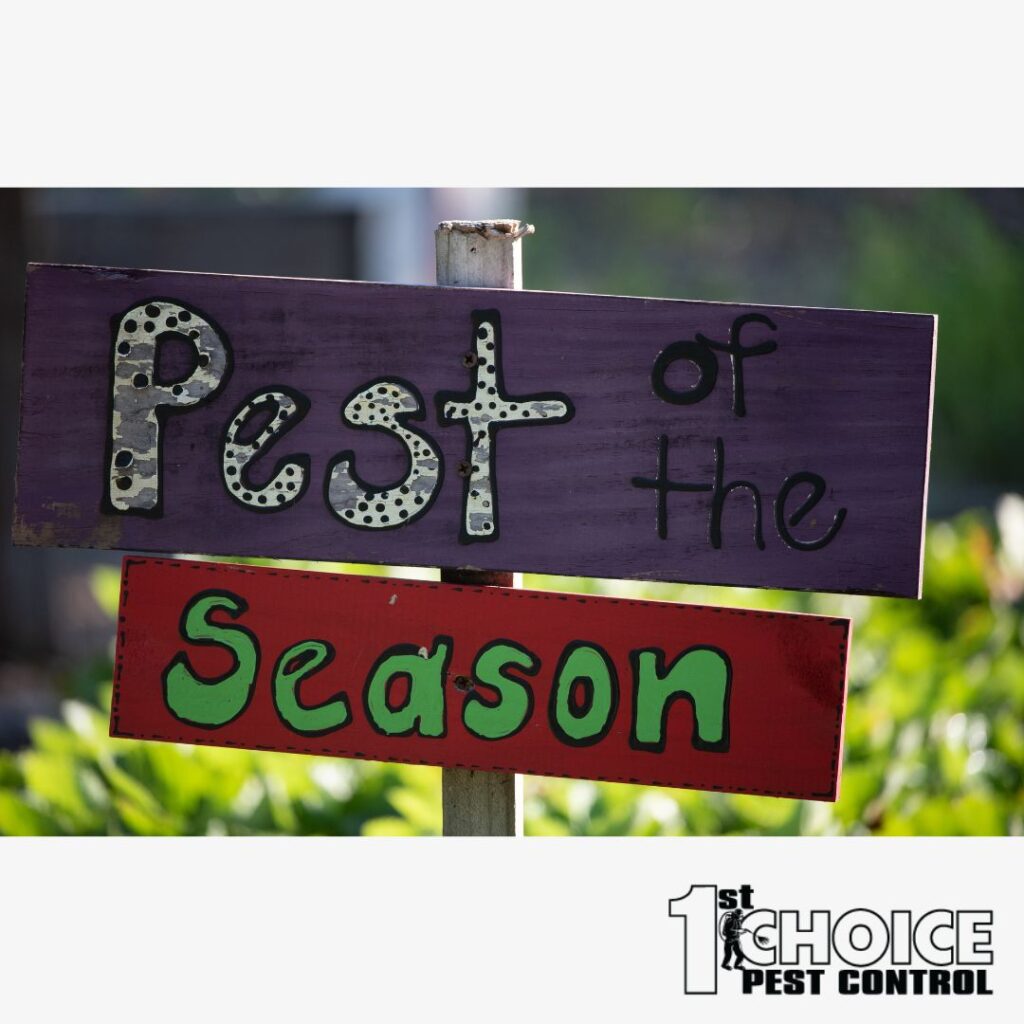Dealing with Seasonal Pest Invaders: A Guide to Understanding and Combating Season-Specific Intruders
Imagine this: Spring’s arrival brings not only blooming flowers and warmer weather but also an influx of pests eager to invade your home. As the seasons change, so do the types of pests that pose a threat to our living spaces. It’s a seasonal battle homeowners face year-round, and understanding these seasonal pest invaders is crucial to maintaining a pest-free environment.
In this comprehensive guide, we delve into the world of seasonal pest invaders, exploring the unique challenges they present during each part of the year. From the relentless ants of summer to the resilient rodents seeking warmth in winter, we’ll equip you with the knowledge and strategies needed to protect your home and property. With each season comes its own set of pest-related challenges, but armed with the right information, you can safeguard your space and enjoy the changing seasons without the worry of unwelcome guests. So, let’s embark on this journey of understanding and combatting pests specific to each season.
Spring Pests
As the world awakens from its winter slumber, so do a multitude of pests ready to make their presence known. Spring, with its milder temperatures and increased moisture, provides the perfect conditions for various insects and critters to thrive. Understanding the types of pests that emerge during this season is the first step in effectively combating them.
Common Spring Pests:
- Ants: Tiny but relentless, ants become particularly active in the spring. They are on a quest for food and water, often infiltrating homes in search of these resources.
- Termites: Spring is the time when termites swarm to establish new colonies. These destructive insects can cause significant structural damage to homes.
- Mosquitoes: As temperatures rise, so do mosquito populations. Standing water from spring rains creates ideal breeding grounds for these bloodsuckers.
- Fleas and Ticks: Pet owners beware! Spring is prime time for fleas and ticks, which can make your furry friends miserable and transmit diseases to both humans and pets.
- Bees and Wasps: With the onset of warmer weather, bees and wasps become more active. Their stings can be painful and, in some cases, life-threatening to those with allergies.
Preventing and Managing Spring Pests:
- Seal cracks and gaps in your home’s foundation and windows to keep ants and termites out.
- Eliminate standing water around your property to reduce mosquito breeding sites.
- Use pet-safe flea and tick prevention products to protect your pets.
- Regularly inspect and maintain your outdoor spaces to deter bees and wasps from nesting.
By being proactive and implementing preventive measures, you can minimize the impact of these spring pests and enjoy the season without the nuisance and potential health risks they bring. In the following sections, we’ll delve into the unique challenges posed by pests in each season, helping you stay one step ahead in the battle against seasonal invaders.
Summer Pests
Summer brings with it longer days, outdoor adventures, and a host of pests looking to capitalize on the warm weather. These critters thrive in the heat, and as temperatures rise, you might find yourself facing new challenges in pest control. Let’s explore some of the most common summer pests and effective strategies to keep them at bay.
Common Summer Pests:
- Mosquitoes: Perhaps the most notorious summer pest, mosquitoes are not just annoying; they can transmit diseases like West Nile virus and Zika virus.
- Flies: House flies, fruit flies, and stable flies are prevalent in the summer and can quickly become a nuisance.
- Cockroaches: These resilient pests are active year-round but thrive in warm and humid conditions, making summer an ideal time for infestations.
- Ticks: Ticks are most active during the summer months and can transmit Lyme disease and other illnesses.
- Spiders: While spiders are generally beneficial, some species can become more visible in the summer and cause concern.
Preventing and Managing Summer Pests:
- Install screens on doors and windows to keep mosquitoes and flies out of your home.
- Eliminate standing water in containers, gutters, and birdbaths to reduce mosquito breeding sites.
- Keep your outdoor areas clean and free of food debris to deter flies and cockroaches.
- Use insect repellent when spending time outdoors, especially during dawn and dusk, when mosquitoes are most active.
- Conduct regular tick checks after outdoor activities and use tick repellent when exploring wooded or grassy areas.
With a proactive approach to pest prevention and management, you can enjoy the summer season without being bugged by these unwanted intruders. In the following sections, we’ll continue our journey through the seasons, uncovering the unique challenges presented by pests in each one and providing you with the knowledge and tools to protect your home and family.
Fall Pests
As the leaves change and temperatures begin to drop, we welcome the beauty of autumn. However, fall also marks the return of certain pests that become more active during this season. Understanding their habits and knowing how to prevent infestations is crucial as we transition from the warmth of summer to the crispness of fall.
Common Fall Pests:
- Rodents: As the weather cools, rodents like mice and rats seek shelter indoors, making your home their cozy haven.
- Stink Bugs: These notorious autumn invaders emit a foul odor when threatened and can quickly become a nuisance in your home.
- Boxelder Bugs: Named after the boxelder tree they favor, these bugs gather in large numbers on the sides of homes during fall.
- Cluster Flies: Seeking warmth and shelter, cluster flies congregate in attics and wall voids, often making their presence known on sunny fall days.
Preventing and Managing Fall Pests:
- Seal cracks and gaps in your home’s exterior to prevent rodents and bugs from entering.
- Keep firewood, leaves, and debris away from your home’s foundation, as these can provide hiding spots for pests.
- Install screens on vents and chimneys to deter pests from using these as entry points.
- Consider professional pest control services for effective rodent prevention and removal.
With these precautions in place, you can enjoy the beauty of autumn without fretting over unwelcome houseguests.
Winter Pests
As winter descends and temperatures plummet, you might think that pests would take a break. Unfortunately, some are just as determined to find warmth and sustenance as you are. Here’s a look at the winter pests that might try to share your cozy abode and how to prevent them from intruding.
Common Winter Pests:
- Rodents (continued): In winter, rodents like mice and rats become even more persistent in their quest for indoor shelter and food.
- Cockroaches (continued): Certain cockroach species, such as the German cockroach, thrive indoors in heated spaces during the winter months.
- Bed Bugs: While not exclusive to winter, bed bugs can become a significant problem as people gather indoors for warmth and holiday celebrations.
- Spiders (continued): Some spider species seek refuge indoors during the winter, preferring the warmth of your home.
Preventing and Managing Winter Pests:
- Seal all cracks and gaps in your home’s exterior, paying special attention to doors and windows.
- Maintain a clean and clutter-free home to reduce hiding spots for pests.
- Regularly inspect your living spaces for signs of pests, such as droppings or webs.
- If you suspect a pest infestation, consult a professional pest control service to address the issue promptly.
By taking these steps, you can ensure that your winter months remain pest-free and comfortable.
Year-Round Pest Control Tips
While each season presents its own pest-related challenges, some strategies apply year-round to maintain a pest-free environment. Here are some key tips to keep in mind:
- Regular Inspection: Conduct routine inspections of your home’s interior and exterior to identify and address potential entry points for pests.
- Proper Food Storage: Store food in airtight containers and clean up crumbs and spills promptly to deny pests a food source.
- Garbage Management: Use sealed trash cans and take out the trash regularly to prevent attracting pests.
- Landscaping Maintenance: Trim bushes and trees away from your home to eliminate pathways for pests.
- Professional Pest Control: Consider scheduling regular pest control inspections and treatments with a trusted pest management company.
By integrating these practices into your year-round routine, you can significantly reduce the risk of pest infestations and enjoy a pest-free living space.
Conclusion
In this comprehensive guide, we’ve explored the fascinating world of seasonal pest invaders. From the emergence of spring pests to the persistence of winter intruders, understanding their behaviors and taking proactive measures are key to keeping your home and property pest-free year-round.
Remember, each season brings its own set of challenges, but armed with the knowledge and strategies we’ve discussed, you can confidently face the changing seasons without the worry of unwelcome guests. By maintaining a vigilant stance on pest prevention and management, you’ll ensure that your home remains a sanctuary, no matter the time of year. So, take action, protect your space, and enjoy the beauty of every season without the hassle of seasonal pests.



 Service Request
Service Request